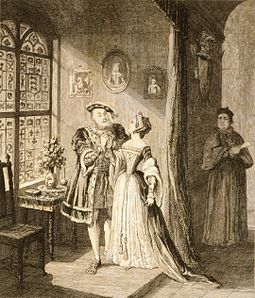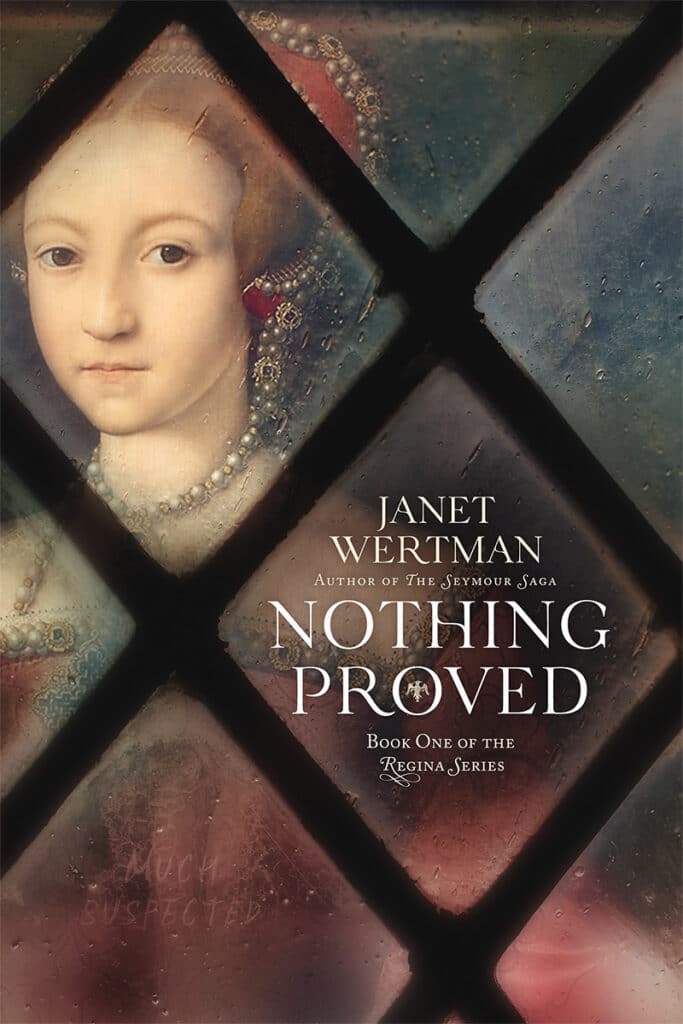
Thomas Cranmer, Archbishop of Canterbury, got this in just under the wire – less than four days before her coronation on June 1! But Cranmer cannot be blamed – so much had to happen to get to this point…
I’m going to skip over the seven years that Henry spent trying to persuade the Pope to invalidate his marriage to Catherine of Aragon, sending multiple ambassadors, submitting different arguments and proposals, canvassing bishops and universities – none of which moved the needle at all. Rather, I’m going to fast forward to Henry’s decision to break with Rome and create his own church…well, at least the part where he moved from thought to action: January of 1533, when Anne realized she was pregnant with what Henry was sure would be his long-awaited male heir.
Intent on making sure this child would be legitimate, Henry went all-in on the Church of England and launched all the necessary steps. On January 25, he married Anne in a private, pre-dawn ceremony. On February 3, Parliament passed the Act in Restraint of Appeals which limited the authority of the Pope to that of any other foreign Bishop (and changed his title to “Bishop of Rome”), which allowed the matter of the annulment to be tried in an English court. Somehow, this audacious act did not stop the Pope from sending the official bulls to name Thomas Cranmer as Archbishop of Canterbury (Clement purportedly was looking for one small way to be accommodating to Henry after seven years of refusals) – they arrived on March 26, and Cranmer was consecrated on March 30. Things went *really* quickly from there. On April 3, the English Convocation delivered their ruling that the Pope had no power to dispense in the case of a man marrying his brother’s widow since it was contrary to God’s law, and their conclusion that Henry’s marriage to Catherine must be invalid. This meant that on Sunday, April 12, Anne attended Mass as Queen of England for the very first time (Catherine was informed on April 9 that her title had changed to Princess Dowager). Still, to be sure of all the legalities, the Convocation ruling was followed by a special trial, presided over by the new Archbishop of Canterbury, to examine the King’s case for annulment of his first marriage. The trial opened at Dunstable Priory on May 10, and Cranmer announced the sentence of nullity on May 23. Finally, on May 28, Cranmer declared Henry’s marriage to Anne good and valid.
Phew.
[Tiny postscript: almost exactly three years later, May 17, 1536, Cranmer would do an about-face and declare Henry’s marriage to Anne invalid…but that’s a story for another time!]
***
If you like my posts, you’ll love my books! Nothing Proved is my newest, the story of Elizabeth Tudor’s journey from bastard to queen. Get it now through your favorite platform – Amazon, Barnes & Noble, Kobo, Apple, or your own independent bookstore

(PS Already read it? Did you love it? Then please review it – even just a stars rating! It makes a huge difference in helping new readers find them and would mean the world to me!)
Be First to Comment